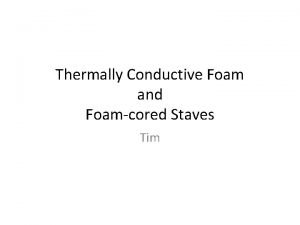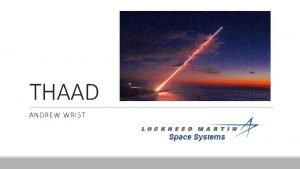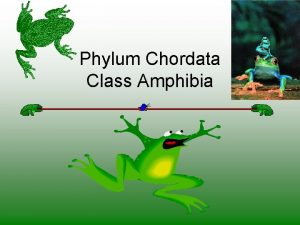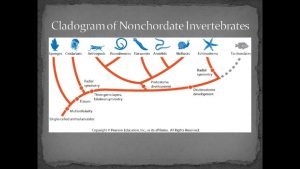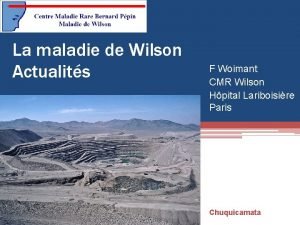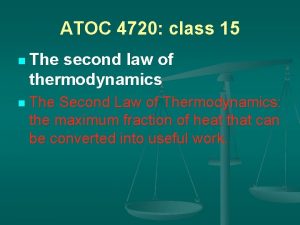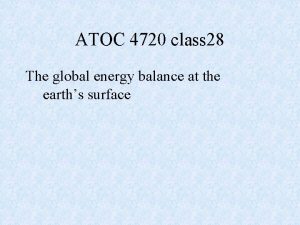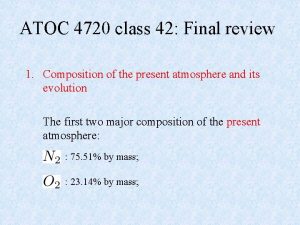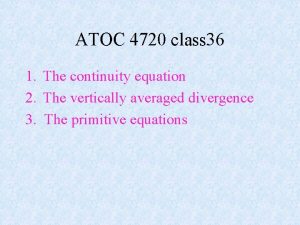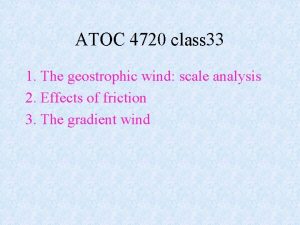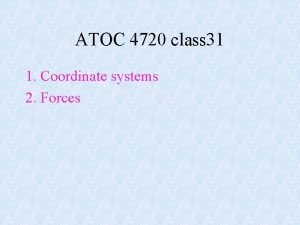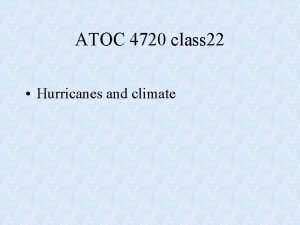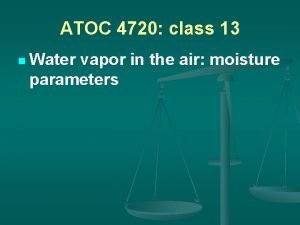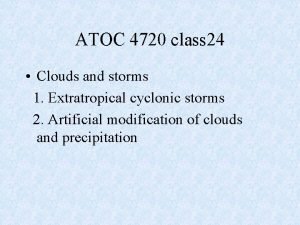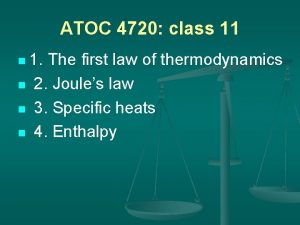ATOC 4720 class 38 1 Thermally driven circulation











- Slides: 11

ATOC 4720 class 38 1. Thermally driven circulation in the absence of rotation 2. Generation of kinetic energy

In the previous class: Primitive equations: ( )

1. Thermally driven circulation without rotation (f=0) Lab experiment 1: Energetics: available potential energy

Energetics for large scale atmospheric circulation (f=0) Available potential energy Kinetic energy; m=1 Fluid motion. Assume no friction, what will happen?

Oscillate forever because of E With friction: equilibrium state -- state of rest Random molecular motions Potential energy(PE) Kinetic energy internal energy Analagous to atmosphere: symmetric ITCZ; Question: Why do atmosphere is in quai-steady Motion, rather than a state of rest?

Answer: In real atmopshere, available potential energy is constantly replenished by diabatic heating Experiment 2: A steady-state HEAT Sink HEAT Source

N pole EQ S pole Minimum (net loose: sink) Solar radiation maximum (earth surfacenet gain: source) Minimum (net loose: sink)

Net+Latent heat EQ Pole Atmosphere: potential temperature rather than temperature Once motion starts: rate of available PE = dissipation Use primitive equations for explanation.

2. Generation of kinetic energy (f=0) Pressure surfaces PE -- KE(Kinetic energy) : work done by PGF

Ignore other horizontal forces and f=0 (CF=0): Work done for unit mass unit time Type (a): thermally direct; Type (b): thermally indirect

Convergence Divergence Z-coordinate: If
 Single circulation and double circulation
Single circulation and double circulation Single circulation and double circulation
Single circulation and double circulation Diagram of alveolus
Diagram of alveolus Thermally conductive foams
Thermally conductive foams Thaad energy management steering maneuver
Thaad energy management steering maneuver The thermohaline circulation belt _____.
The thermohaline circulation belt _____. Neuroendocrine reflex
Neuroendocrine reflex Worm like amphibian
Worm like amphibian Phylum porifera
Phylum porifera Circulation sanguine
Circulation sanguine Figure 11-12 is a diagram of a capillary bed
Figure 11-12 is a diagram of a capillary bed Hepatic portal vein.
Hepatic portal vein.



